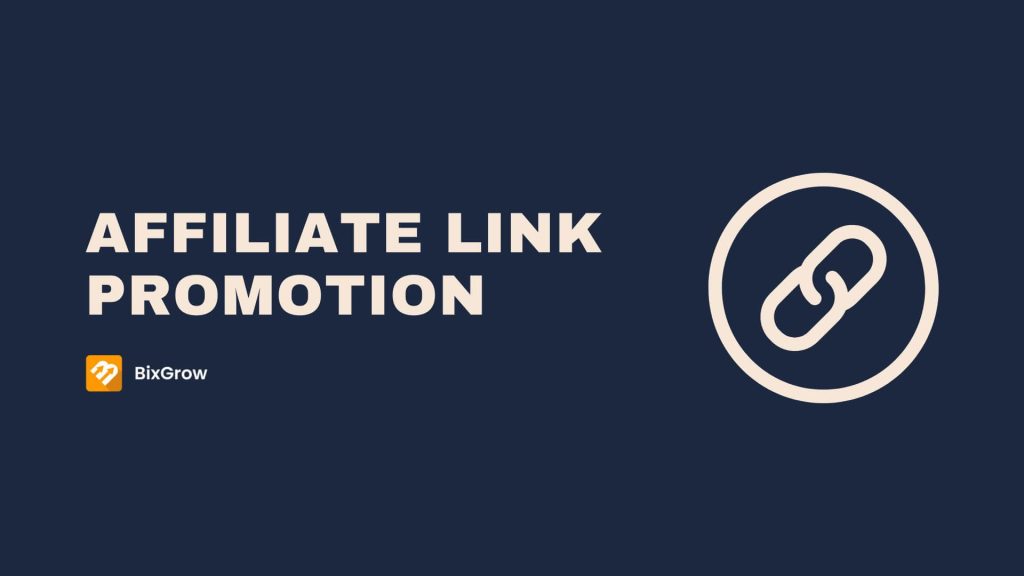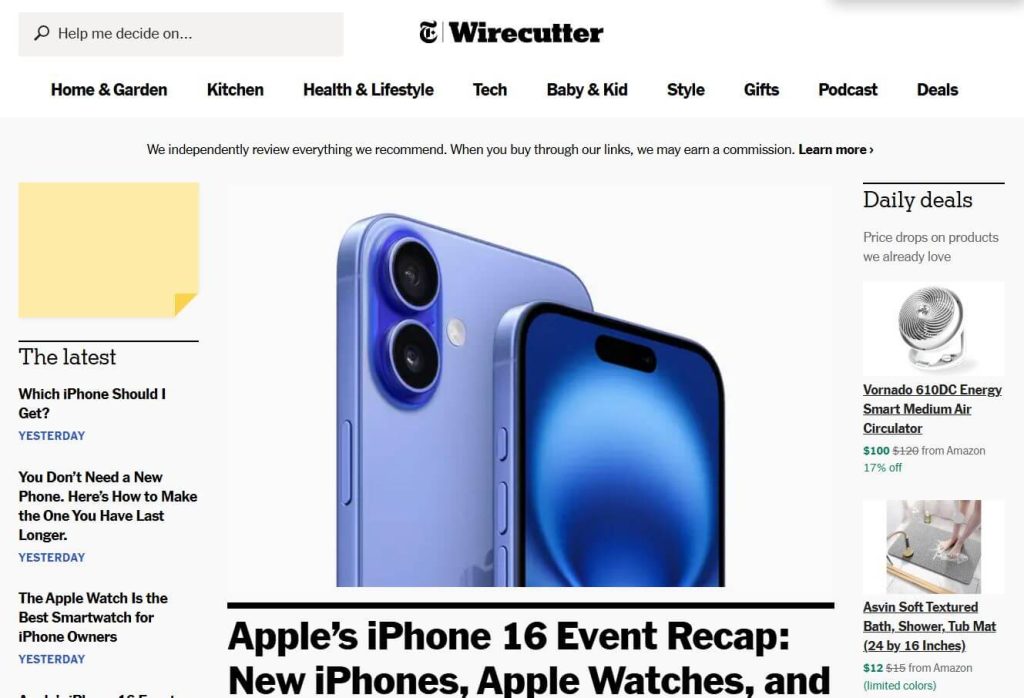To success in affiliate marketing, joining an affiliate program is simply not enough. You need some strategic approaches to promote affiliate links effectively. Affiliate link promotion is an essential part of affiliate marketing. If you are unfamiliar with affiliate marketing, check out here.
Here is your strategy corner, where we provide you some advanced techniques.

What is affiliate marketing promotion?
Think of affiliate link promotion like recommending your favorite sneakers to a friend, but instead of just telling them, you share a unique link to the product. If they make a purchase through your link, you earn a commission.
That unique link is called an affiliate link.
Affiliate link promotion is an easy way to earn money by sharing products you genuinely like. It’s a key element in affiliate programs, where businesses recruit affiliates—like you—to promote their products.
As an affiliate, you receive special links to share through various channels, such as:
- Sending it directly to friends
- Posting on your blog
- Sharing on social media
- Including in emails
Each time someone uses your link and makes a purchase, you earn a portion of the sale. It’s like being a virtual salesperson for brands you trust.
For example, if the sneakers cost $250 and the commission rate is 10%, you would earn $25 for the referral.
This simple payout model is part of a larger system known as affiliate marketing.
Who should promote affiliate links?
Affiliate link promotion can turn your online presence into a passive income stream. Whether you’re a blogger, influencer, or just someone with a social media following, you can earn money by recommending products that fit your niche.
My advice?
You should have a channel in advanced to promote your affiliate there. It is like a supporting method to diverse and increase your income streams.
There are people building a channel just for doing affiliate marketing solely – but they are pro. If you are marketing expert already, welcome to one of the most profitable MMO method on the internet.
How to get an affiliate links?
Getting started with affiliate links is simple:
- Find affiliate programs in your area of interest. There are many networks and directories where you can discover products to promote.
- Sign up for the affiliate program.
- Receive your unique links to promote.
- Start sharing those links!
The key is to stay honest and only promote products you truly believe in. These builds trust with your audience and increases the chances of them making purchases through your links.
It’s also important to be aware of policies related to affiliate marketing, such as:
- Affiliate link disclosure: Always inform your audience that you may earn a commission from purchases made through your links.
- Taxes: It is typically counted as a part of your income tax. So, you really need to be mindful of tax regulations, especially as your income grows.
For such regulation applied on affiliate marketing, please read more here.
In short, affiliate link promotion is about sharing what you love and earning money in return—a win-win for you and the brands you support. Why not give it a try?
Affiliate Link Promotion Strategies
To truly excel in affiliate marketing, we must leverage a diverse array of channels and techniques. Let’s explore advanced strategies for each promotional avenue.
1. Content Marketing
Embedding affiliate links in blog posts is a common practice.
And we do have some suggestion to promote your link – from the most intuitive way like creating listicle articles to more advanced, complex method.
We can elevate this strategy by:
- Listicle article: Articles like “Top 10 tennis shoes for woman” can bring high conversion rate. What I mean by “high conversion rate” is that the audience will eventually buy one pair of shoes, knowing that every link listed there are affiliate links.
- Creating in-depth product comparisons: Develop comprehensive, data-driven comparisons that showcase your expertise and provide immense value to readers.
- Crafting interactive content: Utilize tools like interactive calculators or quizzes that incorporate affiliate products as solutions.
- Producing video reviews: Combine written content with high-quality video reviews to cater to different learning preferences and increase engagement.
The greatest example here is Wirecutter (now part of The New York Times). Wirecutter provides detailed product reviews and recommendations, earning affiliate commissions from the products they recommend. Their content is designed to help users make informed purchasing decisions.

2. Email Marketing
Email remains a powerhouse for affiliate promotions. To maximize its potential:
- Segment your list: Tailor your affiliate promotions based on subscriber interests, behaviors, and purchase history.
- Implement automated sequences: Create sophisticated email funnels that gradually introduce affiliate products as solutions to specific pain points.
- Personalize recommendations: Utilize AI-driven tools to provide personalized product recommendations based on subscriber data.
Email marketing is often associated with content marketing & be a highest-conversion-rate part of your funnel. So, create your email list!
3. Social Media
Social platforms offer unique opportunities for affiliate promotion. Might be there are a lot more opportunities to promote your links rather than posts or reels.
Let’s talk about them!
- Use stories and live sessions: Use ephemeral content to create urgency around limited-time affiliate offers.
- Collaborate with Micro-Influencers: Partner with niche influencers to tap into highly engaged, targeted audiences. It’s not strange, you can collaborate with other influencers even when you already one public figures.
- Utilize social commerce features: Take advantage of platform-specific shopping features. Instagram can in-image product tagging might be an example. While each platform has its own commerce features, it worth for affiliates to concern about the presence of advertisers’ store on the same platform.
There are a lot of examples as many online influencers work & present mainly on social media.
4. Paid Advertising
When employing paid advertising:
- Implement retargeting campaigns: Create custom audiences based on website visitors and tailor ads to their specific interests.
- Utilize lookalike audiences: Expand your reach by targeting users similar to your best-converting customers.
- Optimize for quality score: Focus on creating highly relevant ads and landing pages to improve ad performance and reduce costs.
5. Search Engine Optimization
To outrank competitors in search results:
- Focus on Long-Tail Keywords: Target specific, high-intent search queries related to affiliate products.
- Implement schema markup: Use structured data to enhance your search listings and improve click-through rates.
- Create topic clusters: Develop a comprehensive content strategy that establishes your authority in specific niches.
6. Podcasting and Webinars
Leverage the power of audio and video content:
- Host Expert Interviews: Invite industry leaders to discuss topics related to your affiliate products, adding credibility to your recommendations.
- Create Product-Focused Episodes: Dedicate entire episodes to in-depth reviews or tutorials of affiliate products.
- Offer Exclusive Discounts: Provide listeners with special affiliate offers to incentivize action.
7. Mobile app integration
With the growing prevalence of mobile usage:
- Integration with mobile app: Collab with mobile applications that provides value to users with information of the niche of your influence. You can seamlessly integrate your affiliate promotions here.
- Implement deep linking: Ensure a smooth transition from mobile apps to affiliate product pages.
- Utilize push notifications: Send targeted, timely promotions to app users based on their behavior and preferences.
8. Community Building
Create a community around your niche:
- Launch a Membership Site: Offer exclusive content and affiliate deals to paying members.
- Moderate Online Forums: Establish yourself as an authority by providing valuable advice and strategically mentioning affiliate products when relevant.
- Host Virtual Events: Organize online gatherings that bring together like-minded individuals and create opportunities for affiliate promotion.
You may need some Affiliate Link Optimization!
To maximize the effectiveness of your affiliate links:
1. Link Cloaking and Management
Implement sophisticated link cloaking techniques to:
- Improve link aesthetics
- Track click-through rates more effectively
- A/B test different link placements and anchor texts
2. Conversion Rate Optimization
Continuously refine your affiliate marketing funnel by:
- Conducting regular A/B tests on landing pages
- Optimizing page load speeds for better user experience
- Implementing exit-intent popups with targeted affiliate offers
3. Data Analytics and Performance Tracking
Leverage advanced analytics tools to:
- Check affiliate link performance across all channels affiliate account provided by merchants.
- Identify top-performing products and promotional strategies
- Make data-driven decisions to optimize your affiliate marketing efforts
Ethical Considerations and Best Practices
To ensure long-term success and maintain trust with your audience:
- Always disclose affiliate relationships transparently
- Only promote products you genuinely believe in and have thoroughly vetted
- Prioritize providing value to your audience over pushing sales
- Stay updated on FTC guidelines and industry regulations
Conclusion
You can use some or all strategies, and you can finally be master at some.
The key is continuously refining your approach.
It is not just about promote affiliate links effectively, but to create a sustainable affiliate marketing business.
Remember, success in this field is not just about driving clicks; it’s about building trust, providing genuine value, and creating win-win scenarios for merchants, consumers, and ourselves as affiliate